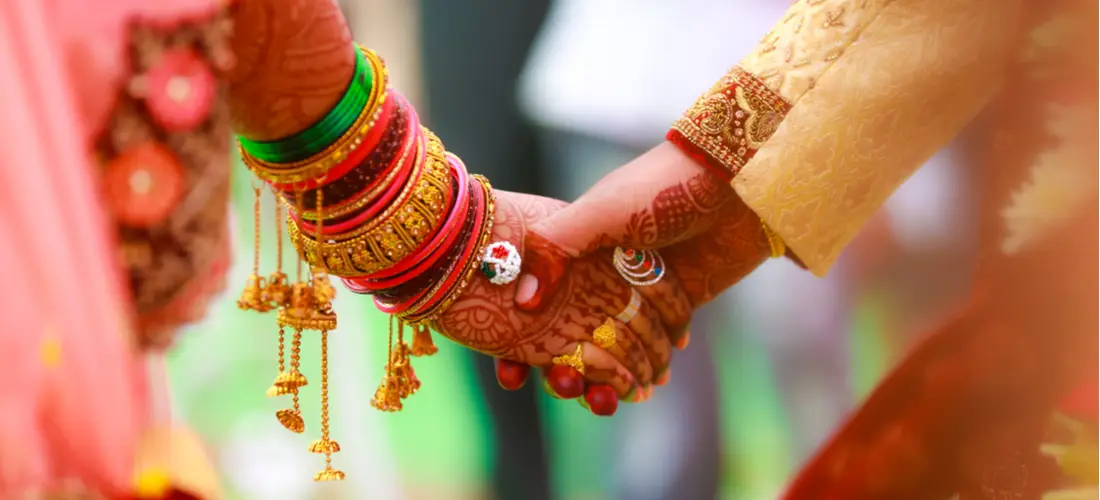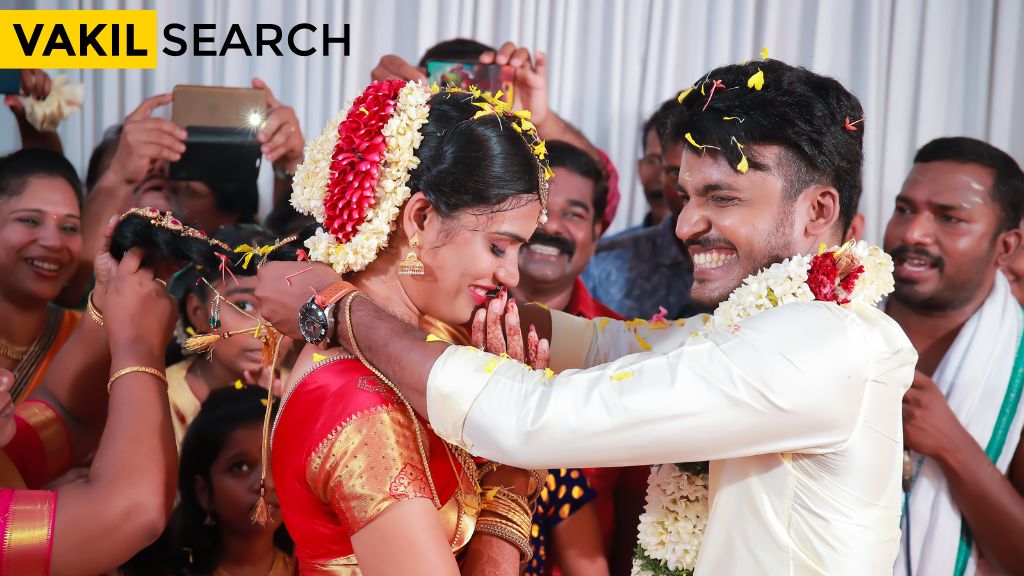Dealing with family is one of the major hurdles that our Indian couples face. No wonder that most couples living in live in relationships in India hide this fact from their family. In this blog, we will see what is live in relationship, what does live in relationship in India mean, how does the Indian law for live in relationship define it and also the legal provisions.
Overview
The concept of a live in relationship was a practice avoided by Indian society for a long time. Living together before tying the knot is an offence or crime to Indian culture previously. Most importantly, the Hindu Dharma prefers ‘One Man, One Wife’ as the most sacred form of matrimony. But as people start to evolve mentally, successive generations are ready to accept a few refusing practices.
Living together For example, cohabitation is a situation in which two people choose to live together for an extended period or permanently while maintaining an emotionally and/or sexually involved connection. The phrase is most usually used to refer to unmarried couples.
For instance, let’s take the case of decriminalization of homosexual cohabitation. The recent judgments, like the decriminalising sections 377 and 497 of the IPC, show how Indian laws have also evolved along with society.
One need not follow strict rules while in a live-in relationship. Statistics reveal that 80% of Indians now support the concept of live in relationship and less than half percent prefer living in this form of life.
What is the meaning of a Live-in Relationship?
The idea of live in relationship evolves from the broadened mindset of the people who started to crave a relationship with no strings attached.
A living relationship couple are the ones who cohabit, with no expectations being the bottom line. However, there is no legal definition to describe the concept in Indian law. It is more of a Westernised theory with very little relevance with the Indian tradition.
So the Supreme Court, at various instances, took the liberty to elaborate on the concept through their judgements. It is different from a marriage. (Marriage or wedlock or matrimony, is a socially/ritually knowledgeable union of a couple). Live in relationship partners don’t force on obligations.
When asked if a live-in relationship is good or bad, there is no proper explanation on if it is good or bad. It merely depends on the person and one’s personality on looking from a different perspective.
People ought to believe that when living together, they can understand each other better and also for many other reasons, which cannot be denied. You Can Register Marriage Online.
What Does Live in Relationship Law Say?
In a typical marriage, the partners are given certain rights and duties to be performed by either of them. There are several personal laws such as Hindu laws, Muslim laws, Christian Laws, etc. that govern and protect the marital bond of a recognized couple. Live In Relationship, being an alien concept to the Indian legislature, does not have any live in relationship law for couples who live together without marriage involved in the relationship.
Since living relationship also support pre-marital sex, there are high chances of a child being born. These children, unlike the successors born out of wedlock, do not have any rights over the inheritance. Besides this, society treats them as illegitimate children, which is unacceptable. However, the Hon’ble Supreme Court cleared them of this ill-fated. And granted them the status of a legitimate child along with the right to property.
Live in relationships were legally considered void-ab-initio. But in a judgement in 1978, such relationships are valid for the first time because of the Supreme Court. If the requisites of a marriage such as mental soundness, the fulfilment of the legal age of marriage, consent, etc. are all satisfied, the couple is considered to be in a legal live-in relationship. The couple is also regarded as married if they live together for a considerably long period until proven otherwise.
The apex court has given five different types of living together in the excellent judgement of Indra Sarma Vs V.K.V.Sarma in 2013. It also stated that such relationships fall within the ambit of Section 2(f) of the Protection of Women Against Domestic Violence Act, 2005 that provides an insight into the said concept. In living relationship, the facets of the relationship might come to a conclusion, irrespective of any decision made by the couple.
Legal Provisions for the Protection of Women in a Live in Relationship:
Couples wanted to explore various types of living, nowadays. live in relationships has become common since they know that the perception of understanding might vary. Though Indian couples widely accept the concept, the patriarchal mindset has partially not been eradicated from society. Women were taken for granted and mistreated by the male partner on various occasions. But did not have any hope for legal remedies in Indian Live in relationship laws. However, as cases of harassment and violence started increasing, the Supreme Court provided the victims with the relief, produced under the Domestic Violence Act. This act does not specify marriage but as a ‘relationship in the nature of marriage’.
The right to maintenance is also a provision exclusively provided for married women in the existing personal laws. Still, as these laws do not govern anything less than a marriage, the women in a live in relationship cannot, at any instance, ask for maintenance from the male partner.
The courts later gave this a remedy by widening the scope of support under section 125. From the Code of Criminal Procedure, criminalising any man who does not provide proper maintenance to the woman is questionable.
Legal Provisions for the Protection of Children Born in a Live in Relationship:
Mental trauma affects children who are born out of such a relationship. There could be custody problems or maintenance problems as the child grows. The courts have declared such children to be legitimate.
Additionally, they have the right to property, not just ancestral but also self-bought property. Since there is no special live in relationship law for the maintenance of children born out of such relationships, the law decides to provide children with protection. Thus, evolved section 125 of the CrPC. The section includes provision for all children who cannot claim remedies in their laws. The Indian law for live in relationship also does not allow the couples living together to adopt a child as per the terms laid down by CARA.
Position Of Live-In Relationships Abroad
Live-in relationships, also known as cohabitation or de facto relationships, refer to unmarried couples living together in a committed, long-term relationship, similar to marriage but without the legal formalities. The acceptance and legal recognition of live-in relationships vary significantly from country to country, and even within different regions of a country.
- Western Countries: In many Western countries, live-in relationships have become increasingly common and widely accepted. The legal rights and protections for cohabitating couples have also improved over time. Some countries, like the Netherlands and Sweden, have even recognized cohabitation as a legal status with similar rights and obligations as marriage.
- North America: In the United States and Canada, live-in relationships are prevalent, especially among younger couples. Cohabitation has become a social norm, and many states and provinces have laws that address certain aspects of cohabitation, such as property rights and child custody.
- Asia: The acceptance of live-in relationships varies widely across Asian countries. In more liberal and urbanized areas, cohabitation may be common and tolerated, while in more conservative or rural regions, it might be frowned upon or even illegal. For example, India has seen an increase in live-in relationships among the younger generation, but the legal status is still somewhat ambiguous.
- Middle East: Cohabitation is generally not widely accepted in many Middle Eastern countries due to cultural and religious reasons. In most cases, it is not recognized legally, and unmarried couples may face societal pressure or legal consequences.
- Africa: Acceptance of live-in relationships in Africa varies from country to country and largely depends on cultural and religious influences. In some regions, it is more common and tolerated, while in others, it may be frowned upon.
- Oceania: Countries like Australia and New Zealand have relatively progressive attitudes towards live-in relationships, and they provide certain legal protections for de facto couples in areas such as property, inheritance, and welfare.
Position Of Live-In Relationships In India
In India, cohabitation was considered taboo since British rule. However, attitudes have changed, particularly in big cities, where live-in relationships are now more accepted. Nonetheless, in rural areas with conservative values, cohabitation is still often frowned upon.
Under the Protections of Women and Domestic Violence Act, 2005, female live-in partners have certain economic rights. The Maharashtra Government approved a proposal in October 2008, suggesting that a woman involved in a live-in relationship for a ‘reasonable period’ should be granted the status of a wife. The determination of what constitutes a ‘reasonable period’ is based on the specific facts and circumstances of each case.
The National Commission for Women recommended to the Ministry of Women and Child Development on 30th June 2008 that the definition of ‘wife’ as described in section 125 of Cr.P.C. (Criminal Procedure Code) should be amended to include women involved in a live-in relationship. The purpose of this recommendation was to bring the protection of women from domestic violence in line with that of legally married couples. The Justice Malimath Committee, set up by the Supreme Court, supported this view and stated that if a man and a woman live together as husband and wife for a reasonable long period, the man should be deemed to have married the woman.
The Malimath Committee also suggested amending the word ‘wife’ under Cr.P.C. to include a ‘woman living with the man like his wife,’ making a woman in a live-in relationship entitled to alimony. On 16th September 2009, the Supreme Court, in a case, observed that a woman doesn’t need to strictly establish a formal marriage to claim maintenance under section 125 of Cr.P.C. This means a woman in a live-in relationship can also claim maintenance under this section.
In another case, the Allahabad High Court ruled that a woman of about 21 years of age, being a major, has the right to live with a man even without getting married if both parties so wish. The Supreme Court further observed that if a man and a woman are involved in a live-in relationship for a long period, they will be treated as a married couple, and any child born to them would be considered legitimate.
Pros And Cons Of Live-In Relationships
The Supreme Court’s controversial statement regarding live-in relationships and pre-marital sex has sparked intense debate across the country. This historic observation has upset many conservative groups who fear that it may undermine the sanctity of marriage. A fragment of society, including notable social activists and prominent figures, has expressed their views on this matter.
Maa Ghara Foundation Trustee, Rutuparna Mohanty, expressed concerns over the potential adverse effects of the ruling. She hopes that the government will take appropriate steps to safeguard the rights and dignity of Indian women and protect society from potential chaos. Mohanty believes that such a ruling could lead to increased instances of child pregnancies and spread HIV/AIDS despite its aim to restrict multiple partners. She also worries that children born out of live-in relationships may not receive proper upbringing.
Some social scientists have identified serious social issues such as adolescent girls’ early pregnancies, drug abuse, violence, and juvenile delinquency. They argue that the controversial ruling could legalize objectionable social behavior, leading to a more spoiled new generation that prefers live-in relationships over arranged marriages.
BJP spokesperson Shaina raises concerns about the amendment’s implications on the Hindu Marriage Act, which does not provide for a second wife among Hindus. She believes that granting the status of a legally married wife to a mistress, including property, inheritance, and maintenance rights, goes against both the Act and Hindu customs.
Those in favor of the freedom to choose live-in relationships see the recent observations as a positive step emphasizing individual freedom. They believe that such relationships allow partners to understand each other better without legal complexities, making it easier to walk out of the relationship if needed. They argue that people should be free to live as they wish as long as their actions do not harm others.
Women from various walks of life welcome the progressive moves regarding live-in relationships, viewing them as a reflection of societal changes and pragmatism. Some feel that the younger generation is becoming more realistic and should have the freedom to make informed choices about their relationships.
It is important to note that live-in relationships have been a subject of debate for a long time, with discussions revolving around whether such relationships can be legally recognized. While it is legal for unmarried individuals to live together in many places, the law traditionally favors marriage and reserves certain rights and privileges for married individuals.
Despite legal recognition, the law does not actively promote live-in relationships, as it traditionally supports the institution of marriage. However, in some cases, the law seeks to protect women from patriarchal power dynamics that can exist even in live-in relationships.
Legitimacy Of The Child Born Out Of A Live-In Relationship
In a previous case involving the legitimacy of a child born out of wedlock, the Supreme Court made a significant ruling stating that if a man and a woman are in a long-term live-in relationship, they will be treated as a married couple, and any child born from this relationship will be considered legitimate. Moreover, the recent amendments to the Domestic Violence Act, 2005, provide protection to women engaged in such relationships for a ‘reasonable long period’ and grant them the status of wives. A Supreme Court Bench, led by Justice Arijit Pasayat, emphasized that children born from such relationships will no longer be labeled as illegitimate. The law now favors legitimacy and rejects the terms ‘whoreson’ or ‘fruit of adultery.’
Inheritance Rights
The Supreme Court ruled that a child born out of a live-in relationship is not entitled to claim inheritance in the Hindu ancestral coparcenary property (in the case of an undivided joint Hindu family) but can only claim a share in the parents’ self-acquired property. This decision overturned a Madras High Court judgment that presumed marriage due to the long relationship and allowed children born from live-in relationships to have a share in ancestral property.
The Bench, comprising Justices B.S. Chauhan and Swatanter Kumar, reiterated a previous ruling that considers illegitimate children, for practical purposes including succession to their parents’ properties, to be treated as legitimate under the legal fiction contained in Section 16 of the Hindu Marriage Act, 1955 (which deals with legitimacy of children of void and voidable marriages). However, the scope of this rule is limited to the properties of the parents, and they cannot inherit properties from any other relatives based on this provision.
A child born out of a live-in relationship may only make a claim on the person’s self-acquired property. Some argue that this interpretation may also allow the child to claim a share in the parents’ ancestral property, as Section 16 permits a share in the parents’ property. Thus, it can be debated that the person is entitled not only to self-acquired property but also a share in the ancestral property.
The Apex Court clarified that while a legal marriage exists, a spouse cannot claim a live-in relationship with another person and seek inheritance for the children from the property of that other person. Such a relationship with another person while the spouse is living is considered ‘adultery,’ not a ‘live-in relationship.’ It is important to note that ‘live-in relationships’ are permissible in unmarried heterosexual couples. However, if one of the said persons is married, the man may be guilty of adultery, and it would be considered an offense under Section 497 of the Indian Penal Code.
Conclusion
Despite live-in relationships becoming legal, they remain non-binding for the partners. Depending on the expectations of the couple, it could be an advantage or disadvantage. It is a big step forward for society to accept a practice such as live-in.
These relationships are not governed by personal laws. However, the Indian Law/Supreme Court is trying to bring in change on live in relationship law. Moreover, the legal position of this foreign concept is being expanded. India has a wide definition of live-in relationships.
FAQs
Is a Live In Relationship legal in India?
Live-in relationships are not illegal in India. However, no specific law governs live-in relationships or provides legal protection to couples in such relationships.
What is the purpose of a live-in relationship?
The purpose of a live in relationship varies from couple to couple. For some, it may be a way to test compatibility before marriage, while for others, it may be a conscious choice to live together without getting married.
What is the age limit for a live-in relationship?
There is no age limit for live-in relationships in India as long as both partners are above the legal age of consent (18 years). However, it is important to note that any sexual activity with a person below the age of 18 years is considered statutory rape and is a criminal offence.
Can a married man go for a live-in relationship in India?
No, a married man cannot enter a live in relationship in India. As per Indian law, any sexual relationship outside of marriage, even if consensual, is considered adultery and is a punishable offense. Moreover, it is unethical and goes against the principles of marriage and commitment.
What does live-in relationship mean?
A live-in relationship refers to an arrangement where two individuals, typically in a romantic relationship, decide to live together as a couple without getting married. In such relationships, they share a living space and often cohabit as if they were married, but without the legal formalities of marriage.
Is a live-in relationship legal in India?
Yes, live-in relationships are legal in India. The Supreme Court of India has recognized live-in relationships and provided certain rights and protections to partners involved in such arrangements. While live-in relationships are not formally regulated by specific laws, the courts have granted some legal recognition and protection to partners in such relationships under certain circumstances.
Is it okay to have a live-in relationship?
The acceptability of live-in relationships varies based on cultural, societal, and personal beliefs. In many modern societies, live-in relationships have become more widely accepted as attitudes towards relationships and marriage have evolved. However, there are still conservative and traditional views that may frown upon such arrangements. Ultimately, whether a live-in relationship is considered okay or not depends on the individuals involved and the cultural norms of the community they live in.
Is a live-in relationship legal or valid?
Yes, a live-in relationship is legal and valid in many countries, including India. While it may not have the legal status of marriage, partners in a live-in relationship have certain rights and protections under various laws related to domestic violence, child custody, maintenance, and inheritance. However, it's essential to note that the legal recognition and rights of live-in relationships may vary depending on the jurisdiction and specific circumstances of the relationship. It is advisable to seek legal advice to understand the rights and obligations in a specific region.
Helpful Links:











